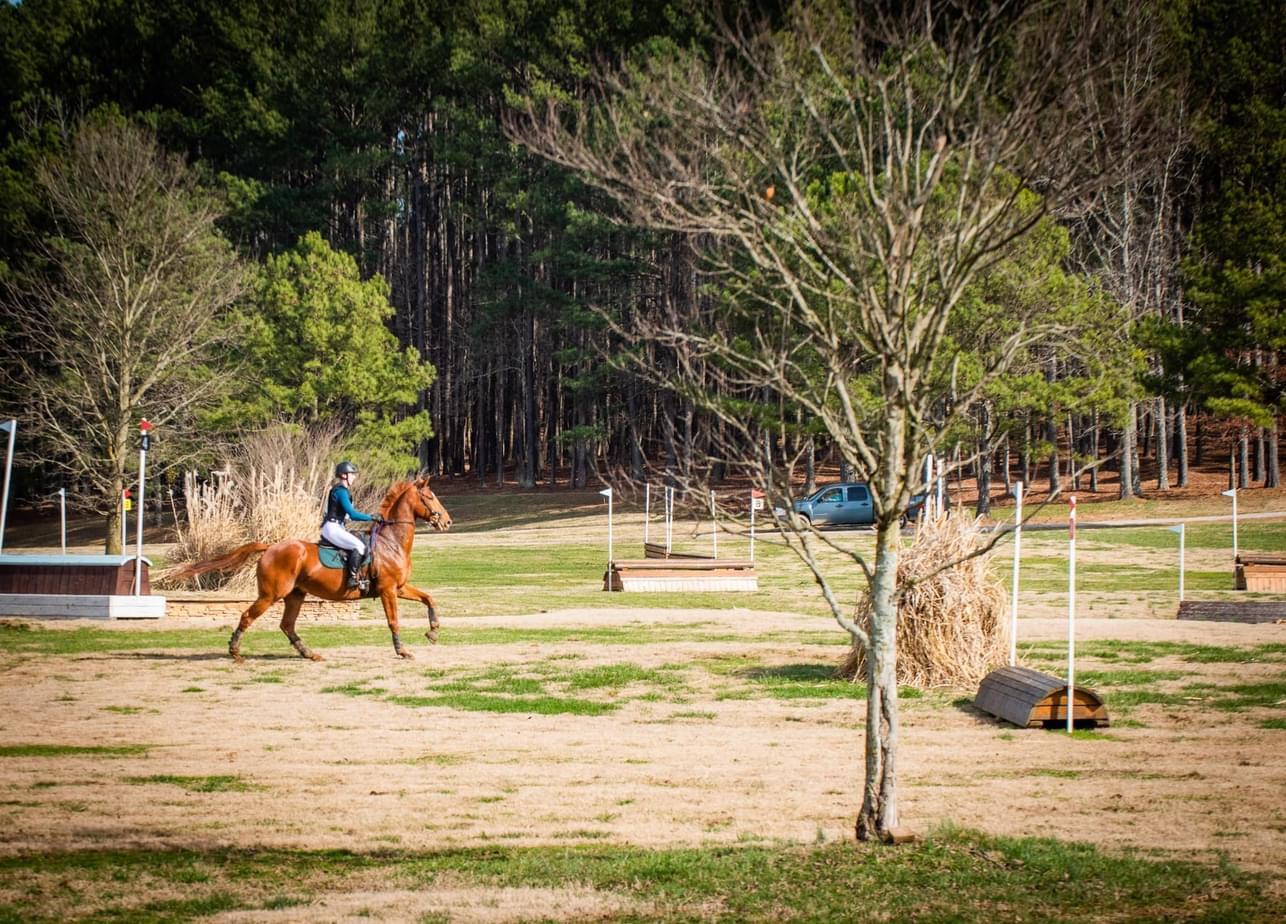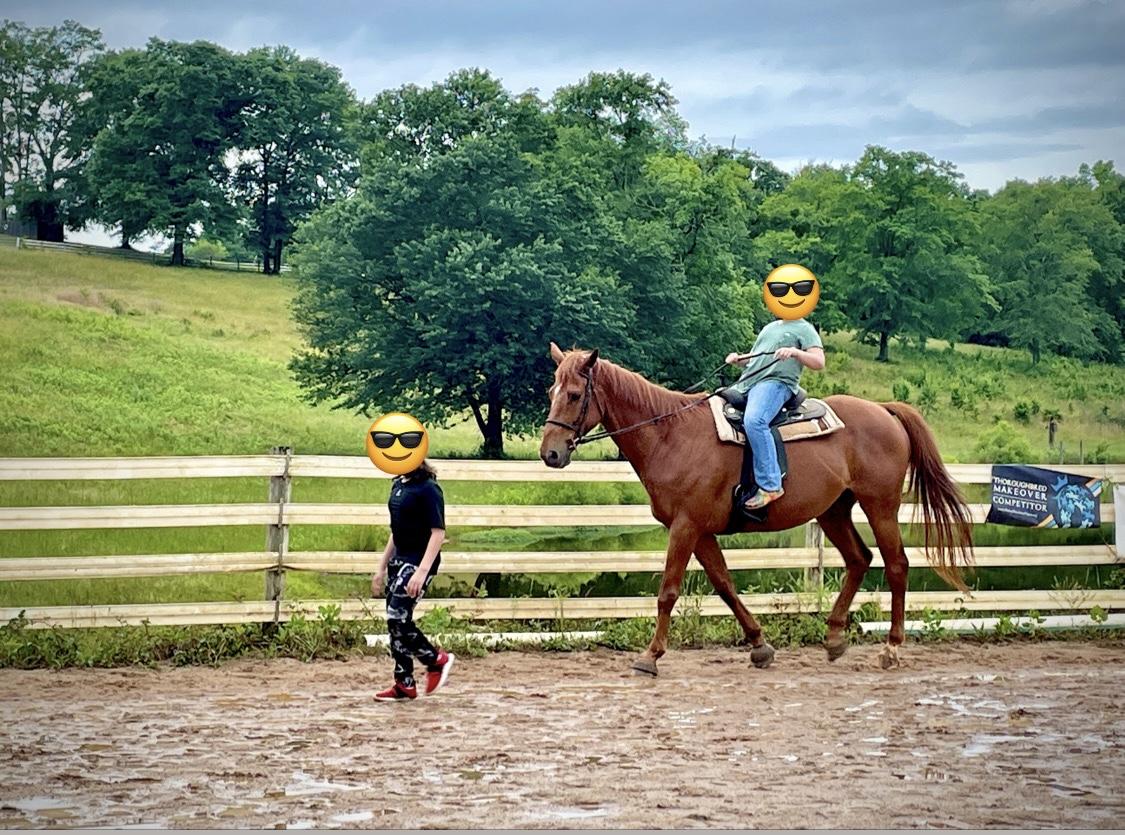
Thoroughbred Logic: The Kick Ride Debacle
“Riding a horse who is … not tip top, might require more of a push … to get a horse forward. However, a horse who is behind the leg as they are transitioning from go pony to show pony does not a true ‘kick-ride’ make.”
Welcome to the next installment of Thoroughbred Logic. In this weekly series, Anthropologist and trainer Aubrey Graham, of Kivu Sport Horses, offers insight and training experience when it comes to working with Thoroughbreds (although much will apply to all breeds). This week, come along for the ride as Aubrey offers her logic on the idea of the “kick ride” horse.
In reference to young, green, or recently off-track Thoroughbreds, the common application of the term “kick ride” or “more woah than go” concerns me. Now that I have your attention, keep reading.
To keep from creating a straw man here, I ought to define my terms: In my book, a “kick ride” is a term often used to describe horses who lack a forward-going motor and need motivation from their rider maintain their pace. If no leg is applied, the horse will settle to a slow and easy gait or simply lose momentum and stop. The kick ride is exemplified by the proverbial saintly lesson pony or horse who packs around whatever is on its back, with speed often throttled not through squeezes but wallops.

Snowflake, my first pony, was definitely a kick ride. He was also a buck and lawn-dart you into the dirt type of ride though too. Photo by Pamela Graham.
In terms of Thoroughbreds, there is of course more nuance to the idea of the “kick ride” than my hyperbolic description of the lesson pony. In most contexts, the term is used in ISO posts or sales ads to understandably differentiate horses who are fast, catty, and reactive (sometimes verging on anxious) from horses who are easier going. The concept, just like that of “more woah than go” also ends up being a gloss for horses who might be more amateur-friendly in contrast to the upper-level-brained dynamos who are relegated to the category “professional ride/re-start.”

Ellie (Lady Allyn) is one of those horses who adds nuance to this concept. She is ammy friendly (with a good trainer), but she’s definitely not a kick ride. Photo by Cora Williamson Photography.
While I absolutely think that certain critters are more amateur-friendly by nature, I worry about these catch phrases for how they set up rider expectation. A Thoroughbred sold as a kick-ride generally is purchased with the expectation that it will remain a kick ride. In my experience, I have often found the opposite to be true as horses let down (see below). And a horse who is sold as a kick ride but becomes more athletic, and more forward over time, risks “bouncing” — moving from owner to owner due to the fact that they did not in the long run maintain their super-easy-going, gotta-kick-to-go status.
My frustration with the concept comes from two places 1) I believe a horse must earn the term, and 2) to have earned it, it must have been tested with other riders and situations and still be the case while the horse is in front of your leg.
Let me explain: Forrest (Don’t Noc It) is a kick ride. This still blows the mind of folks who knew him on the track — my distracted, ADHD redhead who was my upper-level hopeful for a number of years, now at nine years old is in fact the biggest packer at the barn. Now, effectively ride him up, and Forrest is a forward-going Thoroughbred who is in front of your leg, uphill, and powerful. But, given the opportunity to slack, he’ll happily plod along.
Forrest has packed around my exes and their kids, tolerated me teaching lessons with him, and introduced quality riders to eventing. He has the been-there-done-that-ness that has tested his “kick ride” nature. And even there, off property (especially on a cross country course) that kick ride idea goes flying out the window as he is cantering sideways towards the start box. Similarly, pitch and pull at the canter, and this usually ammy-friendly horse will take you for a spin at a speed of his choosing.

The same Forrest doing the thing he loves most and cantering around cross-country with Anna Sasser this winter at Chatt Hills. Photo by author.
Similarly, Louis (Unbridled Bayou) is heading towards kick-ride status. At five, this kiddo has had more than a year of off-track training, filled out, gotten chunky, and is happy to literally be (gently) kicked along. He will putz over fences and plod along if not asked to come up and use himself. But mostly, I can trust Louis to behave with folks who have light seats and hands regardless of experience level. He’s happy to ride at the level you ask and while he will maintain speed once going, he’s not going to shoot off at the accidental bump of a heel or calf and generally is the same horse on property as off.

Amanda Woomer piloting Louis during the Thoroughbred Logic Clinic at the beginning of the month. I’m sure I’m somewhere yelling, “go forward!” Photo by Cora Williamson.
There are two important components that both of those horses have that has earned them the “somewhat of a kick ride” moniker. 1) As described above, they have been tested in a number of different situations and with different riders and maintained their kind, easy-going manner over time, and 2) they are in front of your leg.
In my experience, a significant percentage of Thoroughbreds come off the track behind the leg. They are happy to putter at a slow, mincy cadence and generally struggle to round over their back and power from their hind ends. This is a complex issue, but much of it comes from the fact that race horses use a different set of muscles to power themselves on the track. Their shoulders and hindquarters are literally geared for a different form of locomotion than the round, balanced gaits and self carriage that we ask for in sport horse careers.
Add to this that often, they are in the process of letting down — so they might be dealing with nutritional and health changes, sore feet, body soreness and muscle tightness in general. Riding a horse who is tight, a bit sore, or nutritionally not tip top, might require more of a push (as well as body work, hoof work, and veterinary care) to get a horse forward. However, a horse who is behind the leg as they are transitioning from go pony to show pony does not a true “kick-ride” make.
One of the most fun parts of running a mostly Thoroughbred retraining facility is the ability to watch horses who come in a bit “nappy” and behind the leg transition to forward-going critters. To get there, it takes time, care, tons of quality forage and feed, an excellent vet and farrier, and a confident, forward-going ride that helps them to push over their back and build the muscles correctly. And when they have resolved the issues and feel good, I’d argue that most Thoroughbreds are smart, capable, responsive, and kind. They also naturally are forward thinking and generally happy to stay in front of your leg.

Uno starting to figure out “forward” during his fifth ride. It’s not perfect, but he’s getting there! Photo by Alanah Giltmier.
And if they do not want to go forward, I have a whole bunch of questions, including: is it just a transitioning/letting-down thing? Is there pain? Or are they truly just the puttery, doggy, easy going ride? And of the 20 Thoroughbreds in my barn, I think only three (Forrest, Louis, and Ranger, JC name Cowboy Night) would truly qualify as kick rides — and those three have proven that status over a number of years and with multiple riders.
So to close up, I’ll bring in this pithy meme I encountered the other day:
Good job Warmbloods and Wine, you nailed it. When a horse is behind your leg, they are not able to turn quickly, half-halt or ride up and extend. Jumps come at them at uneven distances, bucks are easier, and balance is often downhill or doggy causing trips, stumbles or missteps to have greater consequence.

Madigan Cat is the proverbial behind-the-leg problem child who resolves the go-forward request with bucks and balkiness. While sending him forward confidently, we’re also investigating potential hind-end discomfort. In his case, he is technically a kick ride, but definitely not in the ammy-friendly sense. Photo by Cora Williamson.
So when encountering requests or advertisements for young, green, or just-restarted “kick rides,” I can only hope that the horse described will land in a place where he or she can receive the necessary care for their body and confidence in the riding to be sent forward into strong, balanced gaits. Do I believe ammy-friendly Thoroughbreds exist? Absolutely. But I’d lean more to “ammy friendly” and “kick ride” as a Venn-diagram, not a synonym.
Enjoy the ride folks, kick on, and keep those horses in front of your leg.







